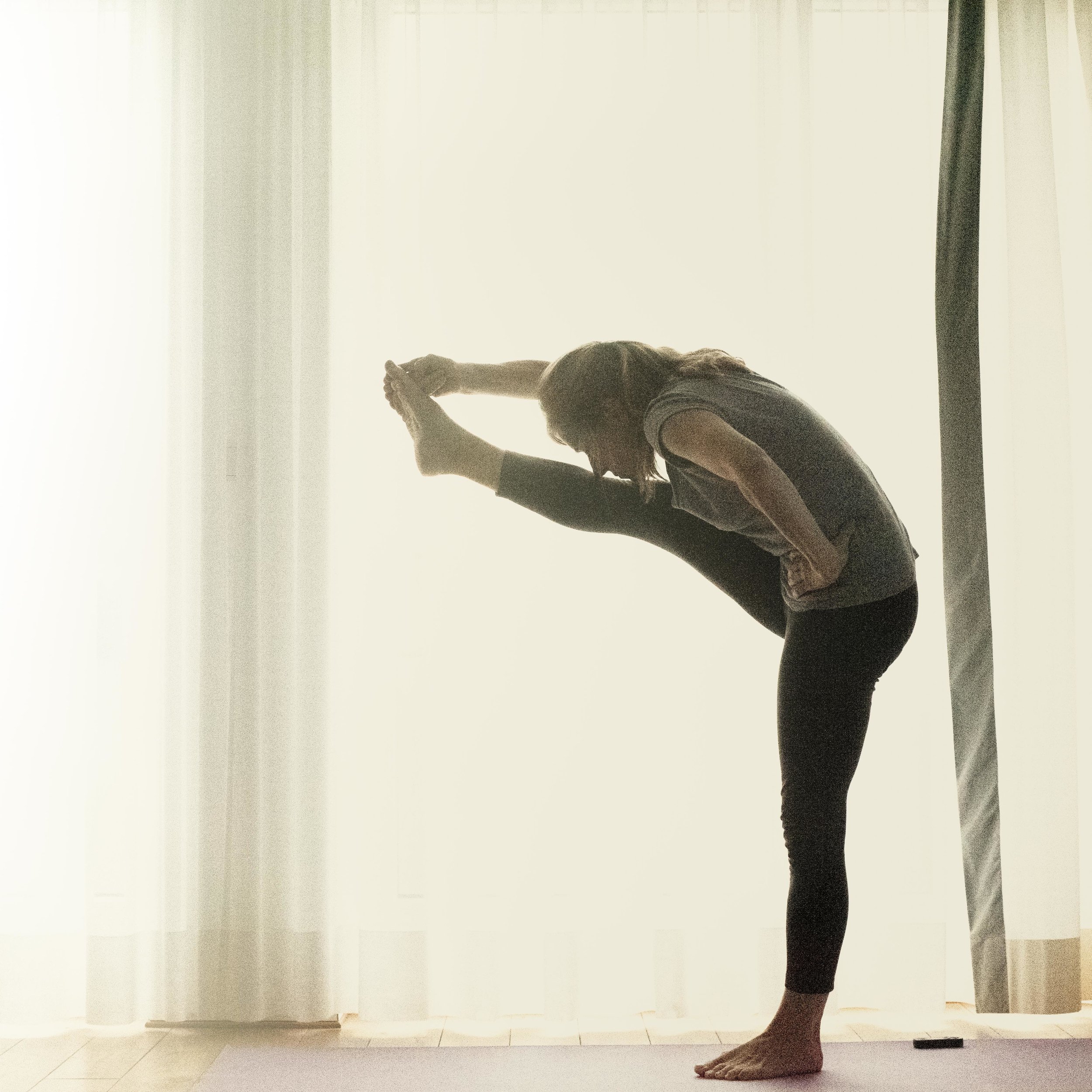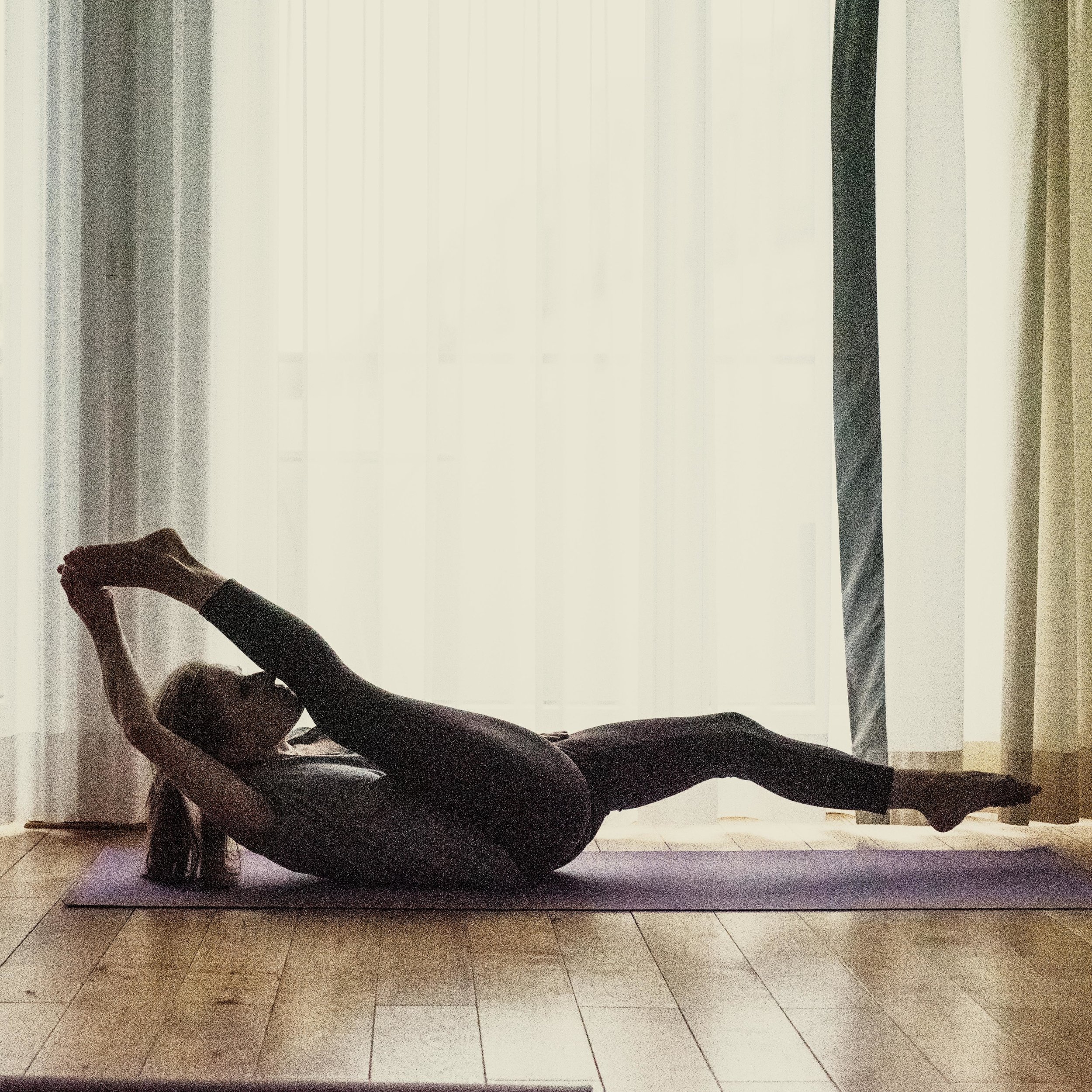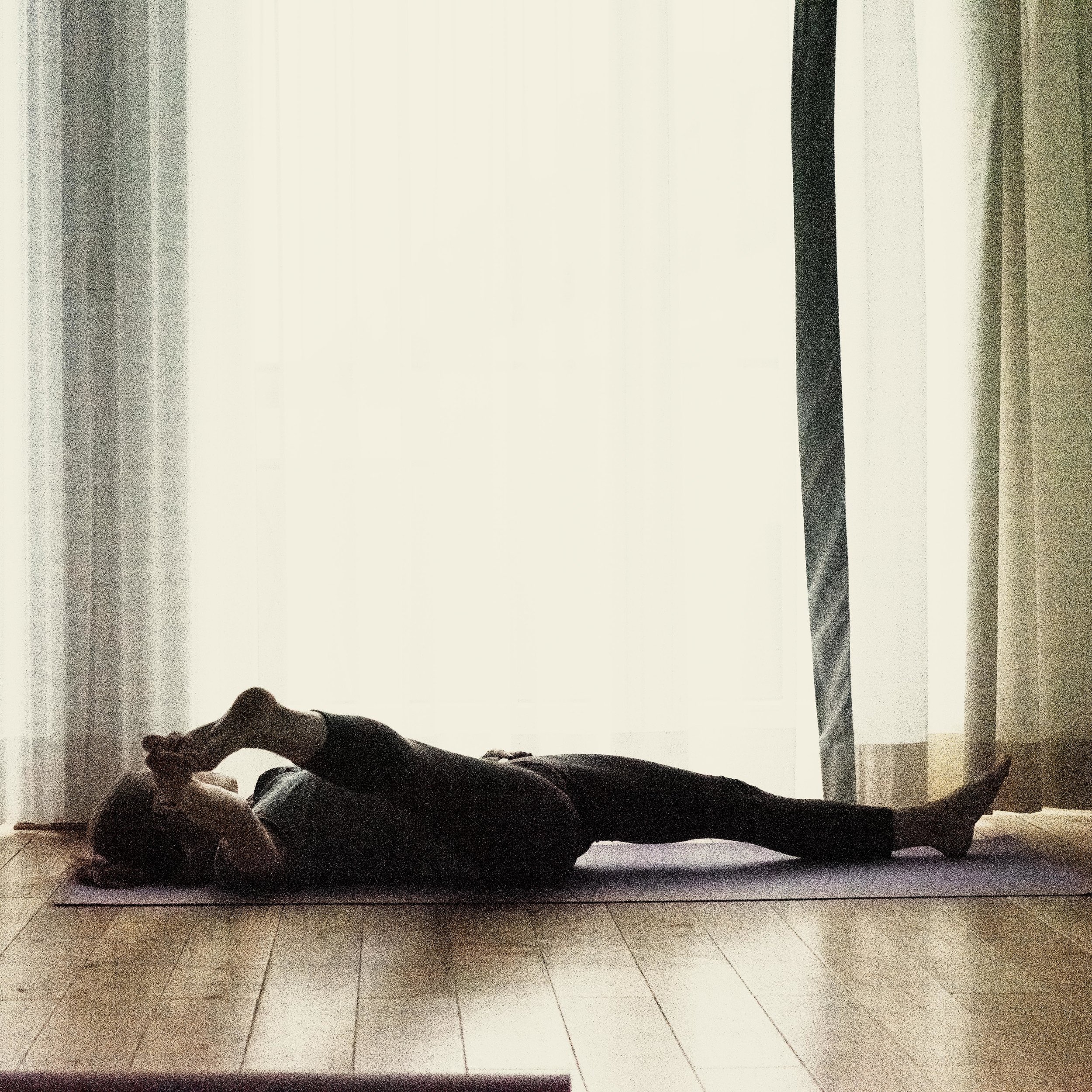Sputa hasta padangusthasana, January 2021
To be a student of yoga and the same time the own teacher can be a challenge. It’s not possible to see oneself from the outside. Picture allow this and it’s worth using this tool. Often one can realize rather fast what needs to get improved. Some tinier things like thumbs who point in the air can be corrected at once. One can discover next steps to improve a pose.
By chance I flipped through the book by B.K.S. Iyengar yesterday. I saw him performing supta hasta padangusthasana. Wow. I know that this pose is challenging. I realized that I avoid the pose.
I obviously tend to move my elbow away from the body. This is something that I could correct easily.
Both legs are stretched. Als the arm that lies on the thigh is stretched. This gives body tension.
When taking care of these things it becomes suddenly a challenge to lift up the body. I couldn’t reach the shin with my chin anymore. My abdomen are too weak. This pose strengthens the abdomen.
The posture on the picture looks so much better than my first attempts.
It’s a very effective method to take pictures of asanas. It goes a step further if one compares these pictures with the asanas of the masters.
As an autodidact or home practitioner one must learn how to learn.
A daily practice is only the beginning…….





